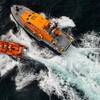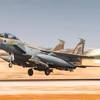MAN B&W Debuts New Engine
The Common Rail Advantage
Smoother performance, lower emissions, lower consumption, flexible application in the respective area of usage: These are the most important advantages of common rail technology. Now this MAN technology that is well-established in the truck sector is also available for MAN B&W’s four-stroke engine range. “In developing our injection systems we have been able to build on many years of experience,” said the Head of Research & Development, Dr. Ralf Marquard. Already in 1979 the company had begun to develop common rail engines that went into serial production. Marquard and his team have studied the different systems and have adapted and optimized the technology with regard to the size of the engines and the particular demands of maritime usage.
At MAN Nutzfahrzeuge AG, a sister company, common rail technology has been successfully applied for just over two years: approx. 9000 MAN trucks are already on the road with this modern injection system. The new common rail generation in the D20 series sets new standards in engine construction. The specialist publication, “Trucker“, praises the D20 in operation as the “King of Torque“ and proclaims: “If there were a title to be won as the quietest truck engine, the MAN six-cylinder engine would bring this title home to Munich.” These engines are successful even under racing conditions: The MAN trucks, equipped with their outstanding engine technolgy, are always at the front in all the significant races. Their last triumph was at the European Championships and went unchallenged.
Technology
In common rail diesel engines fuel is injected into all the cylinders via a “common rail“. The generation of pressure and injection of fuel are not interconnected in a common rail system. Unlike in conventional systems, the injection pressure is independent of the engine speed. Thus there is always full pressure available. The fuel is first stored in the fuel line and then, when a signal is given by the engine controls to the magnetic valves, it is injected into the cylinders. This creates an extremely fine fuel-air mixture which burns particularly efficiently. For the engineers at MAN B&W the challenge was to apply this injection system to large marine engines – and to adapt it for operation on heavy fuel oil, which means dealing with a fuel heated to approx. 150°C. Reliability and durability are an absolute necessity in engines on seagoing vessels. For this reason the new MAN B&W common rail engine is especially designed for reliability. The whole system, including the electronic controls is fully redundant, i.e. every major function has a backup. Thus there are at least two high-pressure pumps to every machine, ensuring that the pressure necessary for fuel injection is available, even if one pump fails.
Unlike in most other common rail engines, the MAN injection system is based on conventional pressure-controlled injection. In usual stroke-controlled systems there is a permanently high pressure of 1600 bar, for example, at the needle seat near the combustion chamber. In the MAN B&W system, the pressure on the valve needle is released by means of the solenoid valve controls which is located away from the cylinder head, at the common rail accumulator (ist OK CV). As a result there is not permanently full pressure on the valve needle seat next to the combustion chamber and the electronic components are protected.
By means of common rail injection it is possible to control combustion precisely and in within the operating range of the engine flexibly. This lowers the fuel consumption. Optimized fuel injection also diminishes combustion noise and the exhaust mission of pollutants. Thus soot emission at part loads is for example reduced to a level below the visibility limit. This is becoming increasingly significant in marine applications as the pollutant emission limits are becoming increasingly stringent worldwide. In particular, start-up soot should be avoided. Common rail technology proves a particular advantage at low speeds and when operating conditions change fast, for example in suction dredgers or in cruise liners traveling very slowly in coastal waters.
Field Tests
Extensive practical testing of the new MAN B&W common rail technology has commenced since the beginning of the year. One of the five auxiliary engines of the CORNELIA MAERSK, a container vessel (6600 TEU) of the A.P. Moeller Group, is equipped with the new technology. The results so far are excellent: “The engine has been performing with convincing results for more than 1200 operating hours,” says Stephan Haas who is assisting in the field trial from the development engineering side. The 32/40CR series engine will be available from 2005 onwards. Larger as well as smaller types are in the pipeline. Thanks to its modular design, the MAN B&W common rail system can also be retrofitted in almost all MAN B&W marine diesel engines.












